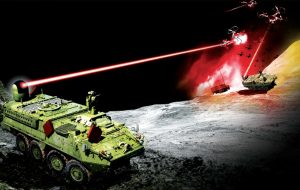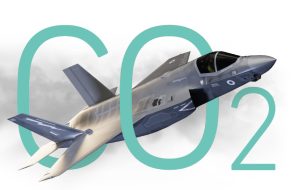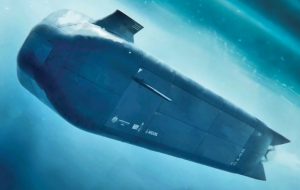When we imagine a multinational military operation, interoperability is expected to face many obstacles, such as the different fuel, ammunition specifications, safety and storage requirements, in addition to radios communicating on different frequencies, all of which could hinder the implementation of effective joint operations. Therefore, to maintain interoperability and effectiveness when deployed together NATO forces use the same language to communicate with each other, the same standards and technical terminology regarding technology (hardware, equipment and weapons), procedures, personnel (terminology and training) and information.
This standardization helps NATO forces and partners use their resources more efficiently and enhance the operational effectiveness of the Alliance, as the foundation of NATO’s success lies in its ability to work as a team so effectively and efficiently that the Alliance’s ultimate strength outweighs the ability of its own forces to carry out multinational operations. By standardizing its specifications, NATO countries can enhance their ability to perform a full range of missions and objectives, in addition, standardization has political value, as it is considered a sign of cooperation and solidarity. Therefore, NATO’s policies include encouraging Member States to develop, and agree upon common concepts, combat doctrine, procedures, specifications and designs and implement them to enhance the operational effectiveness of the alliance as well as its ability efficiently use the available military resources. The major changes occurring in NATO, which dictate new and more sensitive missions (including peace support operations, search and rescue, humanitarian operations and crisis management) require clear and unified specifications.
Thus, NATO needed an appropriate level of standardization to allow for collaborative operations and training in NATO-led operations. Furthermore, the growing need for inter-alliance cooperation in developing and sustaining multinational forces for all missions requires greater flexibility to address broader and more unpredictable risks. However, the industry’s ability to meet military requirements is entirely up to the economic system of the member states, which means that the implementation of NATO’s unified standardization depends largely on the political will of the member states to commit the necessary efforts.
Specification terminology
1- Standard (Specification):
NATO defines a standard or specification as “a document created unanimously and approved by a recognized body, which provides rules, guidelines or characteristics for activities or their outcomes, for common and repeated use, which aim to achieve the optimum degree of consistency in a given context.
2- Interoperability (compatibility):
The ability to work together coherently, effectively and efficiently to achieve the Allies’ tactical, operational and strategic objectives.
3- NATO’s Standardization Agreement:
An agreement that sets unified standards or specifications that member states have approved in whole or in part, with or without reservation, to meet interoperability requirements.
Types of NATO specifications:
Standardization is a broad process that can be applied to any NATO activity. NATO specifications are usually categorized into one of three main areas as follows, although some specifications may apply to more than one:
1- Operational specifications:
The standards that influence future and/or current military practices, procedures, or configurations.
They may apply to matters such as concepts, combat doctrine, tactics and techniques, logistics, training, organisations, reports, models, maps and diagrams.
2- Mission specifications:
The standards that affect future and/or current material properties, including communications, data processing, and distribution.
They may also include codes governing production practices, the specifications of mission systems including command, control and communications systems, weapon systems and subsystems, assemblies, components and parts, and consumables (including ammunition, fuel, supplies, stores, and spare parts).
3- Administrative specifications:
This category primarily relates to the terminology used in both the operational and mission categories, in addition, it includes standards that facilitate the alliance’s administration in areas where there is no direct military application such as economic statistics reports.

The Standardization Process (Unifying Specifications):
Standardization is the process of developing and implementing technical specifications based on the consensus of various parties such as companies, users, stakeholders, standards organizations, and governments to help enhance compatibility, interoperability, safety, and quality, making different countries capable of operating as one, or at least in a more similar manner.
Within NATO, standardization can be defined as the process of developing concepts, procedures, and approaches aimed at maintaining the required levels of interoperability among allied forces in areas of operations, management, and missions to enhance efficiency and conserve resources.
Arranging the levels of standardization in ascending order starts with compatibility, then interoperability and finally interchangeability and commonalities.
Therefore, it can be described as a complex system that combines the strategic commands of nations through lessons learned from NATO exercises, real-world operations and inspections (readiness assessments), voluntarily creating and institutionalizing standards. Standardization management represents a living system that requires inputs, processes, outputs and reactions, in addition, it can include quality control (user satisfaction). NATO’s common specifications range from fuel and ammunition to standardized radio communications, environmental guidelines, joint intelligence procedures, the rules of personnel medical treatment and more.
The importance of standardization:
After the foundation of NATO in 1950, early contact between member states revealed the cultural differences between the allied defence organizations, which prompted the members to prioritize the standardisation of common logistical tools and languages, which were deemed necessary to allow for interoperability and compatibility among the alliance members’ forces.
In 1951, NATO recognized the importance of standardization, therefore, it established the Military Standards Agency (MSA), which after its first meeting, decided to change its name to the Military Agency for Standardization specializing in the development of procedures for proposing, issuing, and reviewing standards and specifications. With the development and growth of standardization work in NATO over the years, many committees and councils and other groups succeeded in establishing NATO’s current standardization bodies. Standardization enables people from a variety of countries and backgrounds to have compatible equipment and to understand each other’s methods and procedures, as well as work seamlessly even if they are just starting to work together, which is known as interoperability, and is considered the ultimate objective of standardization.
Standardization affects operational, procedural, physical and administrative areas (examples of these effects include a common combat doctrine for planning military campaigns, standard procedures for transferring supplies between ships at sea and interoperable materials such as fuel links at airports), which allow NATO member states and friendly nations to work together to prevent duplication and make better use of the available economic resources.
For their part, NATO allies agreed on hundreds of specifications and standards over the years, covering a wide range of equipment technical specifications and best practices, including equipment and procedures for air-to-air refuelling, common sizes and safety rules, tests for making ammunition interchangeable, specifications for national communications systems compatibility, and formats to facilitate the exchange of intelligence and other information.
The NATO Standardization Documents Database (NSDD) provides consolidated storage of all NATO standardization documents and their related information, including national ratification data. The Standardization Agreement was the tool NATO used to guide the efforts of member states, it also represents the end result of contributions from all NATO member states that define a common solution to a common problem or need. Furthermore, NATO’s adoption of a single standardization agreement that defines the specifications of common equipment, military methods and technical procedures for all NATO member states has contributed to providing an effective way of working and communicating between member states to achieve conformity of products and requirements, improve quality and simplify the procurement process, which ensures that there is no duplication of efforts and results and improves joint effectiveness. NATO views standardization as a process whereby technologies, procedures and strategies are used and developed in agreement with members. This process enables NATO allies to work together effectively while optimizing the use of resources and enhancing interoperability, thus effectively managing the operational processes of the alliance.
The products of NATO’s Standardization Authorities ensure that the alliance’s armed forces and troop-contributing partners can work together efficiently and effectively through the following entities:
1- Committee for Standardization
Operating under the authority of the North Atlantic Council (NAC), the Committee for Standardization (CS) issues policy and guidance for all NATO standardization activities. It is composed of representatives from all NATO nations. Its mission is to exert domain governance for standardization policy and management within the Alliance to contribute to the Allies’ development of interoperable and cost-effective military forces and capabilities.
2- NATO Standardization Office
The NATO Standardization Office (NSO) initiates, coordinates, supports and administers NATO standardization activities conducted under the authority of the Committee for Standardization (CS). It also assists NATO’s Military Committee in developing military operational standardization. Its mission is to foster NATO standardization to enhance the operational effectiveness of Alliance military forces.
3- NATO Standardization Staff Group:
It is a staff-level forum that facilitates the coherence of NATO standardization activities and procedures across NATO bodies.
Elements of Standardization:
Standardization in NATO covers three main fields:
1- Standardization management:
This category includes developing, ratifying, issuing and implementing rules, policies and legislation related to standardization in NATO.
In addition, it includes providing support for the commissioning authorities (higher committees within NATO), harmonizing terminology, cooperating with civilian standardization bodies, and promoting standardization.
2- Operational standardization:
This category enables US forces to operate as effectively, efficiently, and safely as possible with allied, multinational, and friendly forces. Furthermore, it covers combat doctrinal standardization and training, including issues of logistical standardization, and work within this field is carried out by several working groups and committees such as the Military Committee and the Logistics Committee under the supervision of the Unified Standardization Council.
3- Material standardization:
This category includes providing support for coordination needs for future defence missions, laying the foundation for mutual international cooperation in the areas of research, development, testing, production, and procurement, and standardising equipment, which is done by several working groups.

Stages of the standardization process in NATO:
1- Determining standardization requirements/deficiencies
This stage includes the identification of standardization requirements, the ability to achieve them, and the required level of unified standardization, which constitutes a part of NATO’s standardization program.
2- Drafting or updating NATO specifications
The drafting or updating of NATO specifications is by nature an international process, therefore it requires international coordination within NATO bodies, in light of the wide range of Alliance activities and desirable standards. Thus, the process of drafting the proposed NATO specifications is usually decentralized, as NATO specifications can be chosen by multinational bodies of national experts.
3- Ratifying NATO specifications by individual countries
Given that the proposed specifications may not be relevant for all Alliance countries, a proposed standard can be ratified and set as a NATO standard, if several countries (not necessarily all of the Alliance) agree to adopt it as an objective.
4- Issuing NATO standards (specifications).
After a sufficient number of countries have ratified the proposed standard, it is issued by the Chairman of the Standardization Committee.
5- Implementing the agreed-upon NATO standards as an issue of national policy
Implementing the agreed-upon NATO standards is considered a national responsibility, and NATO strongly encourages the application of STANAG standards, which have been ratified, by observing, monitoring and reporting results on a country-by-country and case-by-case basis.
6- Verifying and ratifying the implementation of the agreed-upon NATO standards
Standardization verification can be performed in peacekeeping operations, exercises, and other operations, however, it must be according to the verification plan, and it may result in the adaptation and/or deletion of some specifications.
Principles of Standardization:
The following principles of standardization are applied during the development and use of NATO specifications:
1- Application fields
NATO specifications are developed for use within the framework of interactive activities in the operational, command and control, armament and logistics fields. Combat doctrine and/or operational procedures may have an impact on equipment and its development or vice versa, furthermore, the Co-production of equipment may affect the cooperative efforts to support combat services.
2- National Commitment
NATO member states ratify and implement standardization agreements on a voluntary basis.
3- Levels of Standardization
The minimum level of standardization required of the forces of the alliance is interoperability, however, countries should strive to achieve the standard level of interoperability or higher, given that this enhances the operational effectiveness of the Alliance.
4- The Use of Current Specifications
Standardization agreements are only updated when the relevant requirements are not covered by recognized civil standards or already existing military specifications, as the adoption of existing specifications should be reflected in the standardization agreement.
5- Efforts Coordination
Coordination efforts such as consultation, communication and information exchange between key NATO bodies and participation in standardization under the coordination of the NATO Committee for Standardization, help prevent the duplication of efforts, therefore member states should strive for the successful development and timely implementation of effective and integrated NATO standards.
6- Common Terms
To lessen confusion and promote interoperability, NATO specifications use agreed-upon NATO terminology developed under the NATO Terminology Standardization Programme.
By: Retired Colonel Eng. Khaled Al-Ananzah
(Advisor and Trainer in Environmental and Occupational Safety)













